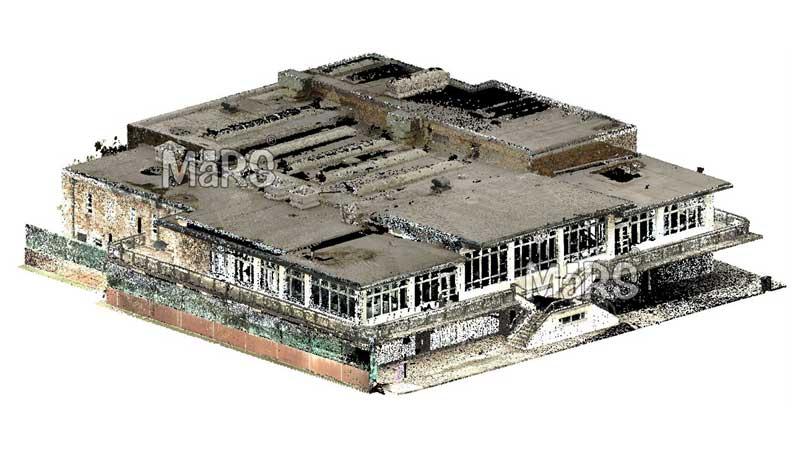Data Quality Standards: How to Ensure Accurate Results in Scan-to-BIM Proje
In the realm of architecture, engineering, and construction, the accuracy of data is paramount. Scan-to-BIM projects have revolutionized the way professionals capture and model existing structures, but the success of these projects hinges on high data quality. Ensuring accurate results requires adherence to stringent data quality standards and a clear understanding of the requirements for Scan to BIM projects. In this blog, we’ll explore the key aspects of data quality and how to meet the essential requirements for successful Scan to-BIM implementations.
Understanding Scan to BIM
Before delving into data quality standards, it's crucial to understand what Scan to BIM entails. Scan to BIM involves using laser scanning technology to capture a precise digital representation of a physical environment. This process generates a point cloud, which is then converted into a Building Information Model (BIM). The BIM serves as a comprehensive, data-rich model that architects, engineers, and construction teams can use for design, renovation, and facility management.
Importance of Data Quality in Scan to BIM Projects
Data quality is the foundation of effective Scan to BIM projects. High-quality data leads to accurate models, which in turn influence design decisions, project timelines, and budgets. Conversely, poor data quality can result in discrepancies, rework, and increased costs. Here are some reasons why data quality is vital:
- Accuracy: High-quality data ensures that the BIM accurately reflects the existing conditions of the structure, minimizing errors in the design and construction phases.
- Efficiency: Accurate data reduces the time spent on revisions and corrections, allowing projects to proceed smoothly and on schedule.
- Cost-Effectiveness: Ensuring data quality helps avoid costly rework and material waste, ultimately saving money for the project.
- Enhanced Collaboration: When all stakeholders have access to reliable data, it fosters better communication and collaboration throughout the project lifecycle.
Key Requirements for Ensuring Data Quality in Scan-to-BIM Projects
To ensure accurate results in Scan to BIM projects, several key requirements must be met:
Proper Equipment Selection
The first step in ensuring data quality is selecting the right laser scanning equipment. Various factors influence the choice of equipment, including:
- Scan Resolution: Higher resolution scanners capture more detail but may require more processing power and time.
- Range: Consider the distance the scanner needs to cover. Different scanners have varying ranges, and the chosen scanner must be suitable for the project scope.
- Portability: For complex or large sites, portable scanners may be necessary to access hard-to-reach areas.
Choosing the appropriate equipment is crucial for capturing accurate data, which is the first step in meeting the requirements for Scan to BIM projects.
Calibration and Setup
Before scanning, proper calibration of the equipment is essential. This includes:
- Leveling the Scanner: Ensuring the scanner is perfectly level to avoid inaccuracies in the point cloud data.
- Distance Settings: Adjusting settings based on the distance to the target to ensure optimal performance.
A well-calibrated scanner is fundamental to capturing high-quality data.
Effective Scanning Strategy
Developing a comprehensive scanning strategy is vital for data quality. Consider the following:
- Scan Coverage: Ensure that the entire area is scanned from multiple angles to capture all necessary details.
- Overlap: Maintain adequate overlap between scans to facilitate seamless data integration during processing.
- Environmental Conditions: Be mindful of external factors such as lighting and weather, which can affect data quality.
A thoughtful scanning strategy helps meet the data quality requirements for Scan to BIM projects.
Post-Processing of Point Cloud Data
Once scanning is complete, the raw point cloud data needs to be processed to enhance its quality:
- Data Cleaning: Remove noise and irrelevant points from the data to ensure clarity and accuracy.
- Registration: Align multiple scans into a unified point cloud. This process is crucial for achieving an accurate representation of the space.
- Data Optimization: Convert the point cloud into a format that is compatible with BIM software. This may involve reducing file size or simplifying the data without losing essential details.
Effective post-processing is a critical requirement for ensuring the quality of data in Scan to BIM projects.
Adherence to Industry Standards
Following industry standards for data quality is essential in Scan to BIM projects. Several organizations provide guidelines for best practices in laser scanning and BIM modeling, including:
- American National Standards Institute (ANSI)
- International Organization for Standardization (ISO)
- BuildingSMART
Adhering to these standards helps ensure that data quality meets or exceeds expectations, aligning with the requirements for Scan to BIM projects.
Regular Quality Checks and Validation
Implementing a system of regular quality checks during the project lifecycle is crucial for maintaining data quality. This can involve:
- Comparative Analysis: Comparing the BIM model against the original point cloud to identify discrepancies.
- Peer Reviews: Engaging team members to review the model and data for accuracy.
Establishing a culture of quality assurance within the team helps meet the ongoing requirements for Scan to BIM projects.
Conclusion
Data quality standards are the backbone of successful Scan to BIM projects. By focusing on the requirements for Scan to BIM projects—such as proper equipment selection, effective scanning strategies, and adherence to industry standards—professionals can ensure accurate results that lead to successful outcomes. As technology continues to advance, maintaining high data quality will remain a crucial factor in the architectural, engineering, and construction industries.
In the fast-paced environment of modern construction, investing time and resources into data quality will pay off in the long run, leading to more efficient, accurate, and successful Scan to BIM projects.








Comments